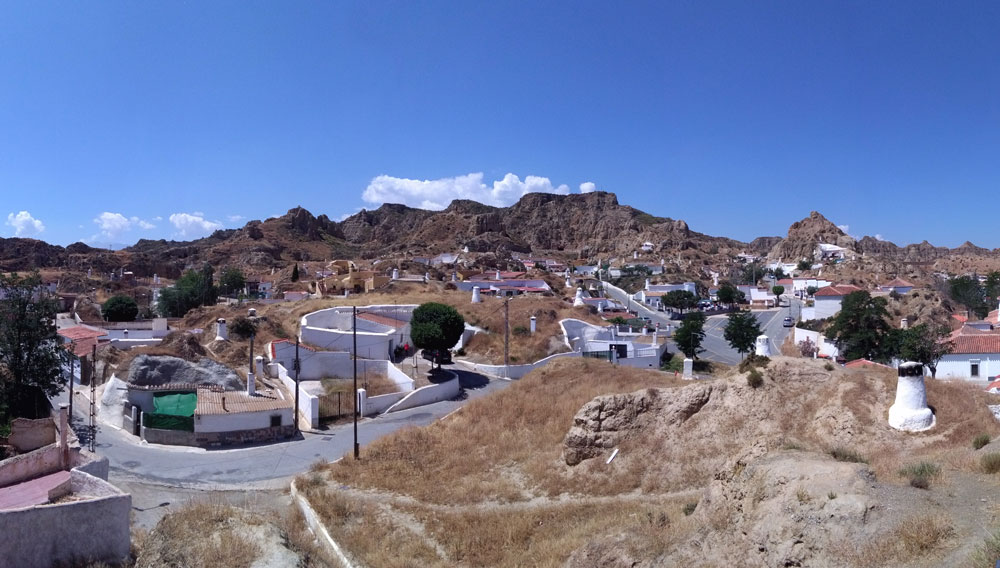5 Location

26. The geographic/topographic location of a settlement depends on the needs it must serve for itself (its inhabitants, natural setting, etc.) and the larger co-dependent settlement system to which it belongs.
Geography has played a dominant role in the creation of settlements since their beginning. That the choice of physical location and natural setting depends on the needs of its inhabitants is clear. Settlements founded on water-based trade and/or industry are located on or near water bodies, for example, while resource towns must be near their specific resource. But this also depends on their role and position within the larger co-dependent system (Law 0). This is apparent in the construction and distribution of Roman settlements around the Mediterranean rim and across Europe, where strategic geographic positions were chosen, leveraging their natural setting and greater role within the Empire (military, trade, etc.).
Jack Williams’ wonderful examination of small towns along the Appalachian Mountains of the United States in East 40 Degrees: An Interpretive Atlas clearly demonstrates this law in action within the past three centuries, across various settlements between Alabama and Maine. He even ultimately describes their urban forms typologically, in relation to their role and natural settings. “River Town”, “Railroad Town”, “Coal Town”, and “Coastal Town” are a few of the names given.
Although our ability and willingness to manipulate natural settings to make human settlements have increased aggressively and the ‘roles’ played by settlements within our global system have increased in complexity, this law is no less true for the settlements being built today. Geographic opportunities and constraints, in tandem with strategic roles (political, commercial, etc.) continue to dictate contemporary building practices.
Interestingly, and as outlined in Laws 17–18, the inertia of settlements allows for changing values towards geography, nature, and role within the larger system to ebb and flow, as they are (re)interpreted by different societies over time (Law 1). This is the case for many of the industrial cities that grew from prior settlements with key geographic locations accessing distribution networks, such as Dusseldorf and Detroit. This process, in fact, characterizes the nature of many settlements that survive over the long-term, as Henri Pirenne’s seminal work describing the decline and rebirth of Roman settlements across the Middle Ages demonstrates.
FURTHER READING (full citations found in reference list):
- Constantino Doxiadis – Ekistics: An Introduction to the Science of Human Settlements
- Jack Williams – East 40 Degrees: An Interpretive Atlas
- Paul Knox – Atlas of Cities
- Spiro Kostof – The City Shaped
- Jared Diamond – Guns Germs and Steel and Collapse
- Henri Pirenne – Medieval Cities: Their Origins and the Revival of Trade
27. The geographic/topographic location of a settlement depends on its needs, geology, anticipated physical size and technology available.
Elaborating on Law 26, this law introduces issues of the anticipated physical limits of a settlement and the influence of geography and topography. Given that the boundaries of a settlement are directly related to geology (soil conditions, etc.) as well as the technologies available to the society, these have been added to Doxiadis’ original law.
The simplicity of this law masks a more complex underbelly. Logically, those choosing a site for a settlement would look to geographic and topographic constraints, and weigh these against their longer-term vision for the settlement (i.e. how many people they anticipate living within it). But this decision is clearly based on various assumptions and speculations, laden with cultural values and technological limitations that may change over time (Law 1).
As discussed in Laws 1–2 and 4–6, the ‘needs’ of inhabitants are varied and elaborate. So, we encounter the construction of settlements for a variety of reasons, in locations that may seem outright illogical when viewed by different cultures.
The 15th-century mountaintop community of Machu Picchu is a case in point. Nestled between two peaks along the crest of a mountain range, it is difficult for most to understand why a society would put such effort towards the creation of a settlement so difficult to access. Yet, it met the ‘needs’ of its inhabitants. Describing the creation of cities based on a cosmic model (versus those models focused on ‘efficiency’ and/or the ‘organic’) the now-retired MIT Professor Julian Beinart quotes Lewis Mumford: “It is only for their gods that men exert themselves so extravagantly” (Mumford, 1989, p. 37). Machu Picchu might be grouped within this category, alongside others such as Angkor Wat (Cambodia), Teotihuacán (Mexico) and Çatalhöyük (Turkey).
The impact of technology (and geology) on a settlement’s physical size is also critical. This is apparent in the transformation of the favelas of Rio. Although the ‘natural’ and ‘official’ city boundaries are prescribed by stable terrain on the lower fringes of the surrounding mountains, various pressures have created informal settlements that cling to the steep, geologically unstable slopes of these towering ranges.
Over time, with changing technologies and growing wealth, however, these slopes are being stabilized and redeveloped by the wealthy in light of the views they provide over the city. In effect, Rio’s natural and official city limits are effectively being ‘redrawn’ in response to changing values and technologies—a process succinctly described in Stephen Graham’s Vertical: The City from Satellites to Bunkers.
FURTHER READING (full citations found in reference list):
- Constantino Doxiadis – Ekistics: An Introduction to the Science of Human Settlements
- MIT course Theory of City Form – Julian Beinart – Lecture 2: Normative Theory I: The City as Supernatural – https://ocw.mit.edu/courses/architecture/4-241j-theory-of-city-form-spring-2013/video-lectures/lec-2-normative-theory-i-the-city-as-supernatural/
- Stephen Graham – Vertical: The City from Satellites to Bunkers
- Lewis Mumford – The City In History

